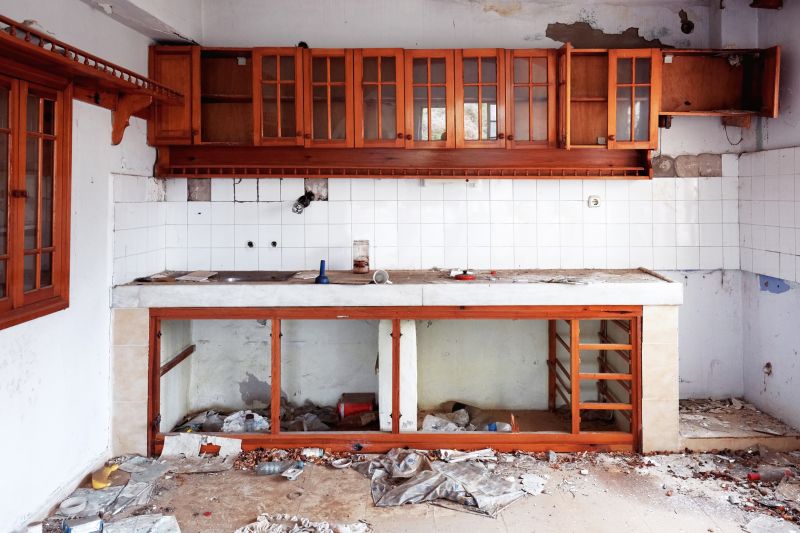Leading Equipment For Safe And Efficient Kitchen Demolitions
Select from industry-leading tools crafted to maximize safety and productivity during your kitchen removal process.
 Embarking on a kitchen demolition project requires careful planning and the right set of tools to ensure safety and efficiency. From removing cabinets and countertops to tearing down drywall and flooring, having the appropriate equipment can make the process smoother and more manageable. Selecting the right products depends on the scope of the demolition, the materials involved, and safety considerations. Whether tackling a small renovation or a complete overhaul, understanding the available tools and their functions is essential for achieving a successful project.
Embarking on a kitchen demolition project requires careful planning and the right set of tools to ensure safety and efficiency. From removing cabinets and countertops to tearing down drywall and flooring, having the appropriate equipment can make the process smoother and more manageable. Selecting the right products depends on the scope of the demolition, the materials involved, and safety considerations. Whether tackling a small renovation or a complete overhaul, understanding the available tools and their functions is essential for achieving a successful project.
Top Overall Option
Heavy-Duty Demolition Hammer
A versatile demolition hammer equipped with adjustable settings and ergonomic design can handle a variety of tough tasks, from breaking concrete to removing tiles. Its powerful motor and durable construction make it suitable for extensive demolition work, while safety features help protect the user during operation.
Types of Products For Kitchen Demolitions
Demolition Hammers
Heavy-duty tools designed for breaking through concrete, brick, and other hard materials.
Reciprocating Saws
Versatile saws ideal for cutting through wood, drywall, and metal pipes.
Crowbars and Pry Bars
Essential hand tools for prying apart structures and removing fixtures.
Sledgehammers
Powerful tools for breaking up large, stubborn materials like concrete slabs.
Utility Knives
Precise cutting tools useful for trimming drywall and other materials.
Dust Masks and Respirators
Protective gear to safeguard against dust and debris inhalation during demolition.
Work Gloves
Protect hands from sharp objects and abrasions.
Safety Goggles
Eye protection to prevent injury from flying debris.
Wheelbarrows and Debris Carts
Equipment for transporting debris efficiently.
Heavy-Duty Trash Bags
Large, durable bags for collecting and disposing of debris.
Power Drills
For removing fixtures, screws, and fasteners.
Floor Scrapers
Tools for removing old flooring materials.
Tile Removers
Specialized tools for efficiently removing ceramic or stone tiles.
Cordless Rotary Tools
Multi-purpose tools for grinding, cutting, and sanding in tight spaces.
Extension Cords
Reliable power sources for portable tools.
Ladders and Scaffolding
Access equipment for reaching high areas safely.
Vacuum Cleaners with HEPA Filters
Effective for cleaning up fine dust and debris after demolition.
Structural Support Beams
Temporary supports to ensure safety when removing load-bearing elements.
Popular Choices
Widely used for cutting through various materials during demolition projects.
Commonly employed for prying and removing fixtures and materials.
Frequently chosen for breaking through concrete and masonry.
Popular for protecting against dust during demolition work.
Standard safety gear for hand protection.
Often used for trimming and precise cuts.
Essential for debris transport on many demolition sites.
Commonly used for removing old tiles efficiently.
Popular for their versatility in tight spaces.
Always in demand for eye safety.
Preferred for debris collection.
Frequently utilized for reaching elevated areas.
Safety should always be a top priority during demolition activities. Proper protective gear, including gloves, goggles, and dust masks, helps prevent injuries and exposure to debris. Additionally, planning the sequence of demolition can minimize damage to structural elements and reduce cleanup time. Using specialized tools designed for specific tasks, such as removing stubborn fixtures or breaking through tough materials, can significantly improve efficiency and reduce physical strain.
It is also important to consider the disposal and recycling options for debris generated during demolition. Segregating materials like metal, wood, and drywall can facilitate recycling and disposal, helping to manage waste responsibly. Adequate storage and transportation equipment are necessary to handle large quantities of debris safely and effectively. By choosing the right products and following best practices, homeowners and contractors can execute kitchen demolitions with confidence and safety in mind.
Key Buying Considerations
- Scope of demolition work and the materials involved
- Power and performance specifications of tools
- Safety features and protective gear compatibility
- Weight and ergonomic design for ease of use
- Durability and build quality of the equipment
- Availability of replacement parts and accessories
- Ease of maneuverability in confined spaces
- Noise levels and vibration control features
- Compatibility with existing power sources or batteries
- Ease of maintenance and cleaning
- Storage options for tools and accessories
- Budget constraints and cost-effectiveness
- Environmental conditions of the workspace
- User reviews and reputation of the product
- Warranty and customer support options
This content contains affiliate links. We may earn a commission if you make a purchase through these links, at no additional cost to you.
